Everything You Need To Know About Dry Healing A Tattoo
Let your tattoo breathe and simply embrace airing out your ink for optimal recovery!

Image: Shutterstock
Tattoo dry healing is an aftercare method that involves allowing the fresh tattoo to naturally air dry and heal on its own, without the application of healing ointments or moisturizers. This minimalist approach has gained immense popularity due to its simplicity and effectiveness in promoting proper healing, and for eliminating the additional costs of moisturizers. After getting the beautiful body art, the tattoo artist covers the tattoo with a protective film for the first few hours. This bandage then needs to be removed once the initial healing phase has passed to allow the tattoo to breathe. The dry healing tattoo method then comes into play as an effective aftercare process. This encourages the formation of a natural scab that acts as a protective barrier against bacteria and other external contaminants. Avoiding excessive moisture prevents over moisturization, thereby reducing the risk of infection and ink dilution. Let’s explore more about this latest aftercare method and understand why dry healing a tattoo might be a good idea. Jump into the article for more!

In This Article
Why Choose The Dry Healing Approach?

While you could simply use a tattoo ointment, balm, or skin-safe lotion on your fresh tattoo, we are here to help you understand why choosing the dry healing tattoo method might be a good option. This simple technique trusts the body’s natural healing process, allowing a protective scab to form on the freshly inked layer of skin, to prevent any external interference. Abstaining from moisturizers and oils reduces the risk of overhydration and skin infection, while also helping maintain the ink’s vibrancy and overall quality. You do not have to deal with applying tattoo aftercare products as well, which sometimes may be formulated with harsh chemicals that can irritate the fresh tattoo further.
Now, let us dive deeper and understand how letting the tattoo air dry is better by reading about the dry healing tattoo stages below.
Key Takeaways
- The dry healing tattoo method features the formation of natural scabs and does not require the application of any ointments or moisturizers.
- The procedure helps in preserving the tattoo ink and allows for good vibrancy.
- The scabbing creates a protective barrier against bacteria and other forms of external contaminants.
- The dry healing technique can cause scarring and uneven healing.
- This tattoo healing method may not be best suitable for dry skin types, as it can lead to excessive dryness of the skin.
Stages Of Dry Healing A Tattoo
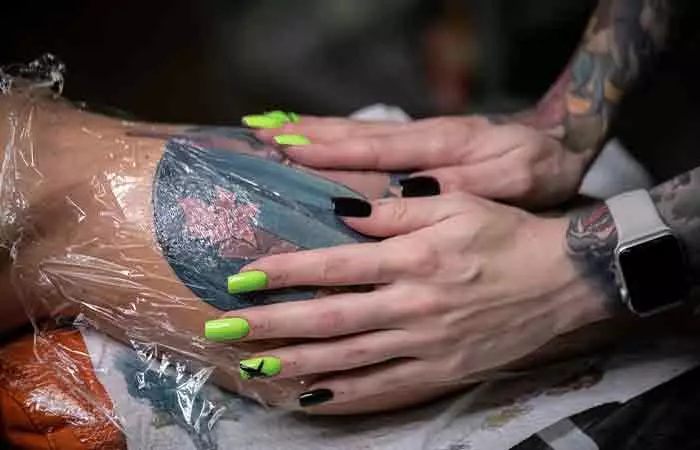
Dry healing tattoo stages involve a mindful progression towards proper recovery. Initially, after getting the fresh ink, a thin protective film is applied by the tattoo artist to promote a controlled and effective healing environment for the tattoo wound. The first stage focuses on preserving this covering for numerous hours. Once the protective tattoo film is removed, the dry healing phase begins. For a week, you may experience redness and witness swollen skin on and around the tattooed area, which then will lead to growing itchiness and minor discomfort.
The next stage leads to the formation of a scab on the tattoo that acts as a shield against contaminants. You may feel additional irritation but ensure to not pick at the scab. You must truly be patient with the whole tattoo healing process to achieve a vibrant outcome.
Trent Randal, a Youtuber, shared his personal experience about how he likes to rely on the dry healing tattoo method for his fresh tattoos. He states in his vlog, “This is the method that works best for me and that is dry healing.” He further talks about how he follows the care instructions, stating, “I just like to keep it clean and don’t put anything on it and kind of just restrict the movement so I don’t bend it too hard or crack the skin (i).”
 Quick Tip
Quick TipWhile we have covered the dry healing tattoo method, let’s check out how the wet healing tattoo technique compares to it. Scroll down to know more.
Dry Healing Vs. Moist Healing
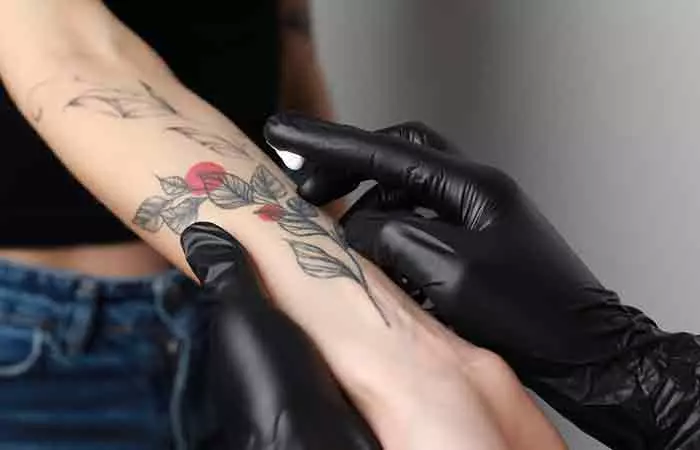
The dry healing tattoo method is characterized by natural scab formation on the skin without the use of tattoo aftercare products, such as creams or ointments. On the other hand, the moist healing tattoo technique features regular application of tattoo balms, ointments, or moisturizers as part of the aftercare instructions to keep the tattoo hydrated and healthy. While moist healing can prevent excessive dryness, it requires consistent attention to avoid over moisturization.
Both methods have supporters, but choosing the right approach depends on your skin type and how your tattoo heals. Your tattoo artist can give you personalized advice based on their experience and by analyzing your skin’s needs.
There are numerous health benefits associated with both kinds of healing. Let’s look at dry healing here. Read on.
Benefits Of Dry Healing A Tattoo
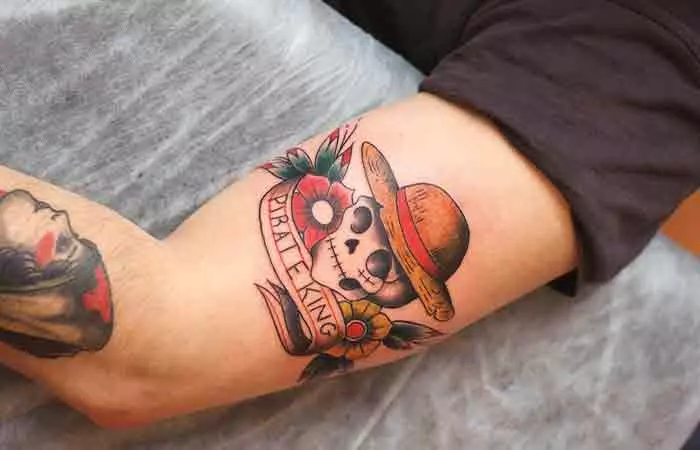
- Reduced Infection Risk: The dry healing tattoo method minimizes moisture, thus creating an environment less prone to the growth of bacteria and reducing the risk of infection.
- Natural Scab Formation: The formation of a natural scab on the tattooed skin helps in creating a physical barrier against external contaminants.
- Allowing Skin Breathability: Over-moisturizing tattoos can inhibit proper healing by suffocating the tattooed area. Instead, try dry healing to promote the tattoo’s exposure to air, thereby allowing better breathability for the skin during the crucial healing and scabbing process.
- Preservation Of Ink: The absence of excess moisture in the dry healing tattoo method helps prevent ink dilution and maintains the color vibrancy of the tattoo, thereby requiring less touch-ups.
However, it’s best to consult your tattoo artist for personalized guidance on the best post-care practices. Each tattoo artist has their own methods and protocols to ensure proper healing and they can offer insightful information.
While dry healing is a popular tattoo aftercare method these days for its various benefits, it does carry some side effects that one should be aware of. Let us read more about them in the section below.
 Quick Tip
Quick TipPotential Risks And Side Effects Of Dry Tattoo Healing

Along with the many benefits, this simple technique also carries potential risks, such as excessive dryness that can lead to uncomfortable itching and cause the temptation to pick at crusty scabs and disrupt their formation. In certain cases, after the initial scabbing damage, deeper scabbing may form on the tattooed skin, which can result in uneven healing or color loss. Deep scarring can also occur if you end up picking at the tattoo. The extreme lack of moisture may also extend the recovery period, with more healing time required as the scab may not easily come off. Moreover, individuals with already dry skin types or even sensitive skin may not benefit from this method. Ensure to consult your professional tattoo artist to determine the most suitable aftercare process for yourself.
Apoorva, a blogger, writes about getting a tattoo and the aftercare methods she followed. She recounts the healing stages in her blog post, sharing, “The skin scabs, peels and falls off.” She then proceeds to share some of her own tips from firsthand experience and states, “Let your tattoo breathe; no cling films or covering up. Wash your tattoo at least twice a day but no soaking and gently pat dry with a soft tissue or towel (ii).”
Conclusion
Dry healing a tattoo has emerged as an effective tattoo aftercare method, allowing the body’s natural healing mechanisms to take the lead. This simple approach sees minimal interference from skincare solutions, and the development of protective scabs combat infection risks and help preserve the tattoo’s vibrancy. However, it demands patience and also depends on the individual’s skin type. Nevertheless, embracing the benefits of dry healing tattoos can indeed contribute to successful tattoo recovery and a stunning piece of art in return. Hopefully, this article was able to provide you with some good insight into this popular aftercare technique, so you can consider trying it post your next tattoo session.
Frequently Asked Questions
Is dry healing suitable for all types of tattoos?
Factors like skin type and tattoo style may impact the effectiveness of the dry healing tattoo method. While all tattoos are equal to skin wounds, and hence require similar aftercare, it is important to consult your tattoo artist first for the method that can work best for you.
How does dry healing differ from traditional aftercare methods?
Dry healing a tattoo requires the tattoo to air dry without applying any form of ointment or moisturizer, whereas traditional aftercare methods usually rely on moisturizing the fresh tattoo to maintain skin’s hydration levels and prevent dryness.
Can I shower or get my tattoo wet during the dry healing process?
For the dry healing method, it is best to avoid getting the tattoo wet, and keeping your tattoo dry even in the shower. You may clean the tattoo with warm water and a gentle antibacterial soap to prevent any allergic reactions. Simply dry the skin with a clean paper towel and ensure not to apply any moisturizer or balm on it.
Are there specific types of tattoos that benefit more from dry healing?
Certain tattoos like simple line work or black ink may benefit more from the dry healing tattoo method.
Is sun exposure allowed during the dry healing period?
No, it is important to protect your fresh tattoo from sun exposure during the dry healing method to prevent skin damage and achieve faster healing.
What signs indicate that my dry healing tattoo may be infected?
There are certain symptoms that you can look out for incase you feel your dry healing tattoos might be infected:
• Skin inflammation
• Excessive redness
• Prolonged heat
• Abnormal colored discharge
• Scaly bumps
• Extreme itchiness
Can I sleep on the side where my tattoo is dry healing?
No, it is recommended to sleep on the opposite side of your freshly inked area to allow the dry healing process to work effectively and prevent friction from disrupting the tattoo scabbing process on the skin .
Illustration: Everything You Need To Know About Dry Healing A Tattoo

Image: Stable Diffusion/StyleCraze Design Team
Dry healing a tattoo carries its own benefits; the method is fairly simple, budget-friendly, and allows your body to do its magic. Learn more about this technique and how to effectively follow it in the Youtube video below!
Personal Experience: Sources
StyleCraze's articles are interwoven with authentic personal narratives that provide depth and resonance to our content. Below are the sources of the personal accounts referenced in this article.
(i). Dry Healing Your New Tattoohttps://youtu.be/WRtgK_qNf98?si=Ic9rgrpZPZqcb5jS
(ii). Tattoo Aftercare & Healing: Tattoo Tales Part II
https://fashioncandy1.wordpress.com/2013/07/12/tattoo-aftercare-and-healing/
Read full bio of Jayd Hernandez
Read full bio of Pahul Nanra
Read full bio of Madhumati Chowdhury
Read full bio of Manjari Uppal







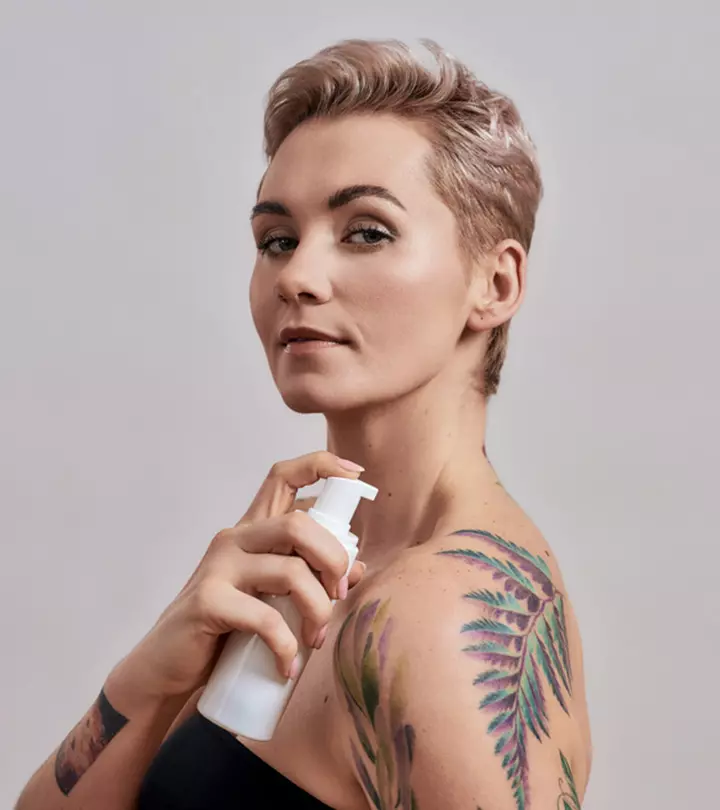

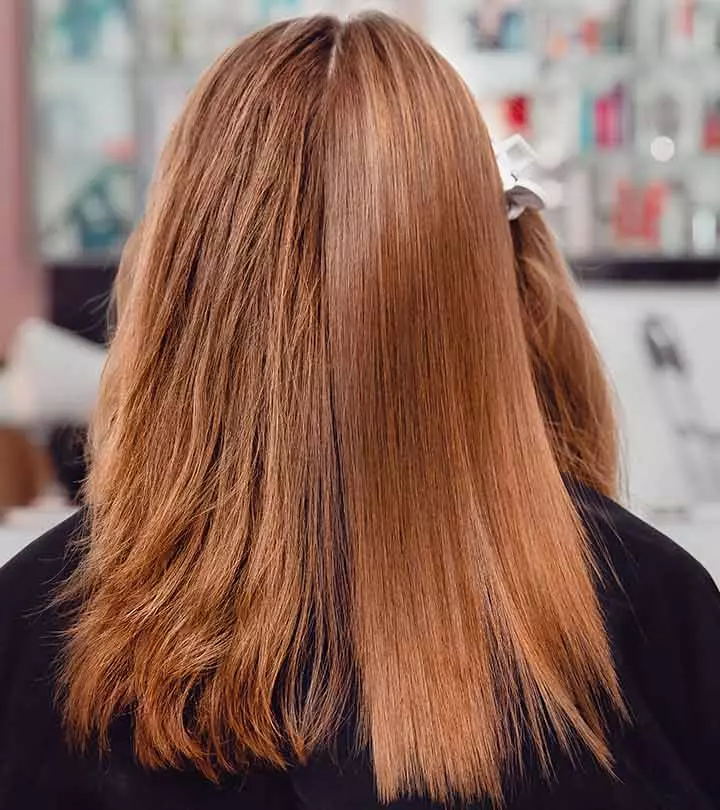

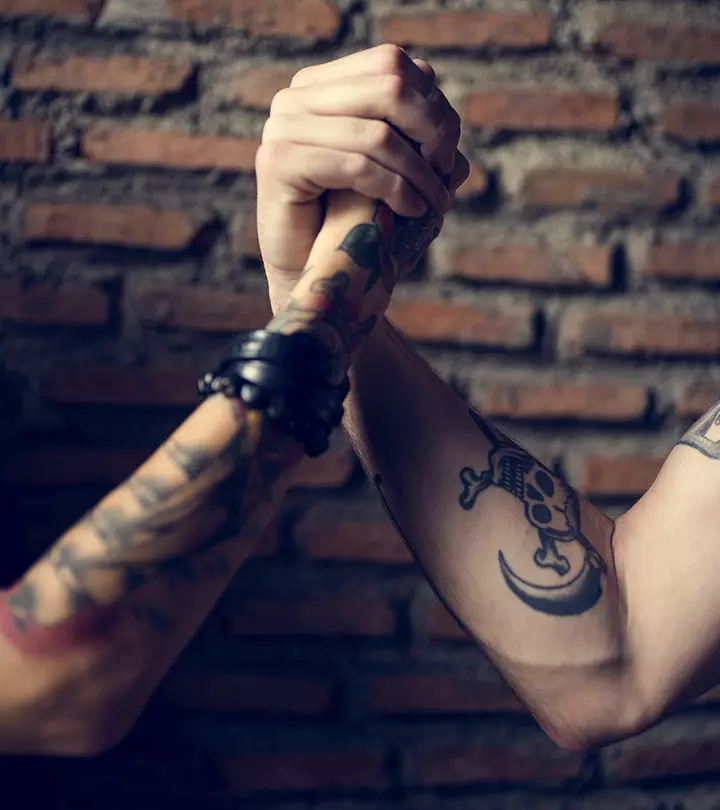







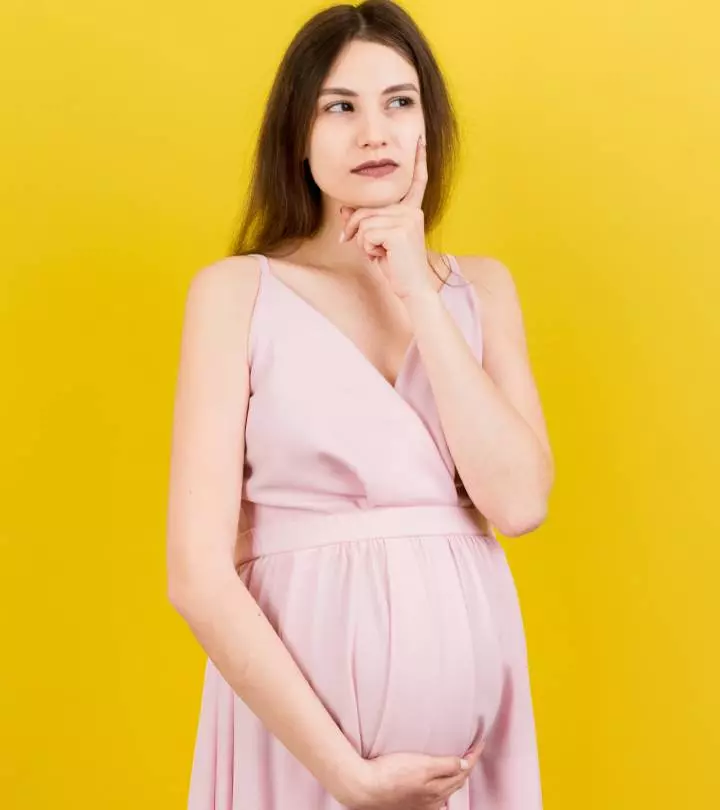
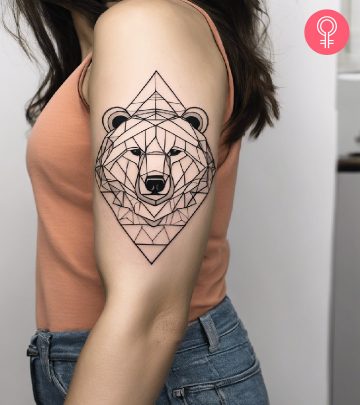



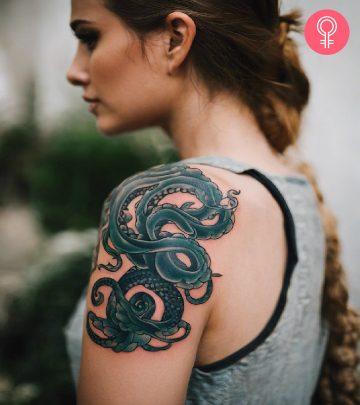


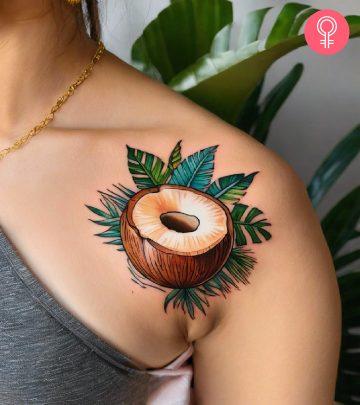
Community Experiences
Join the conversation and become a part of our empowering community! Share your stories, experiences, and insights to connect with other beauty, lifestyle, and health enthusiasts.